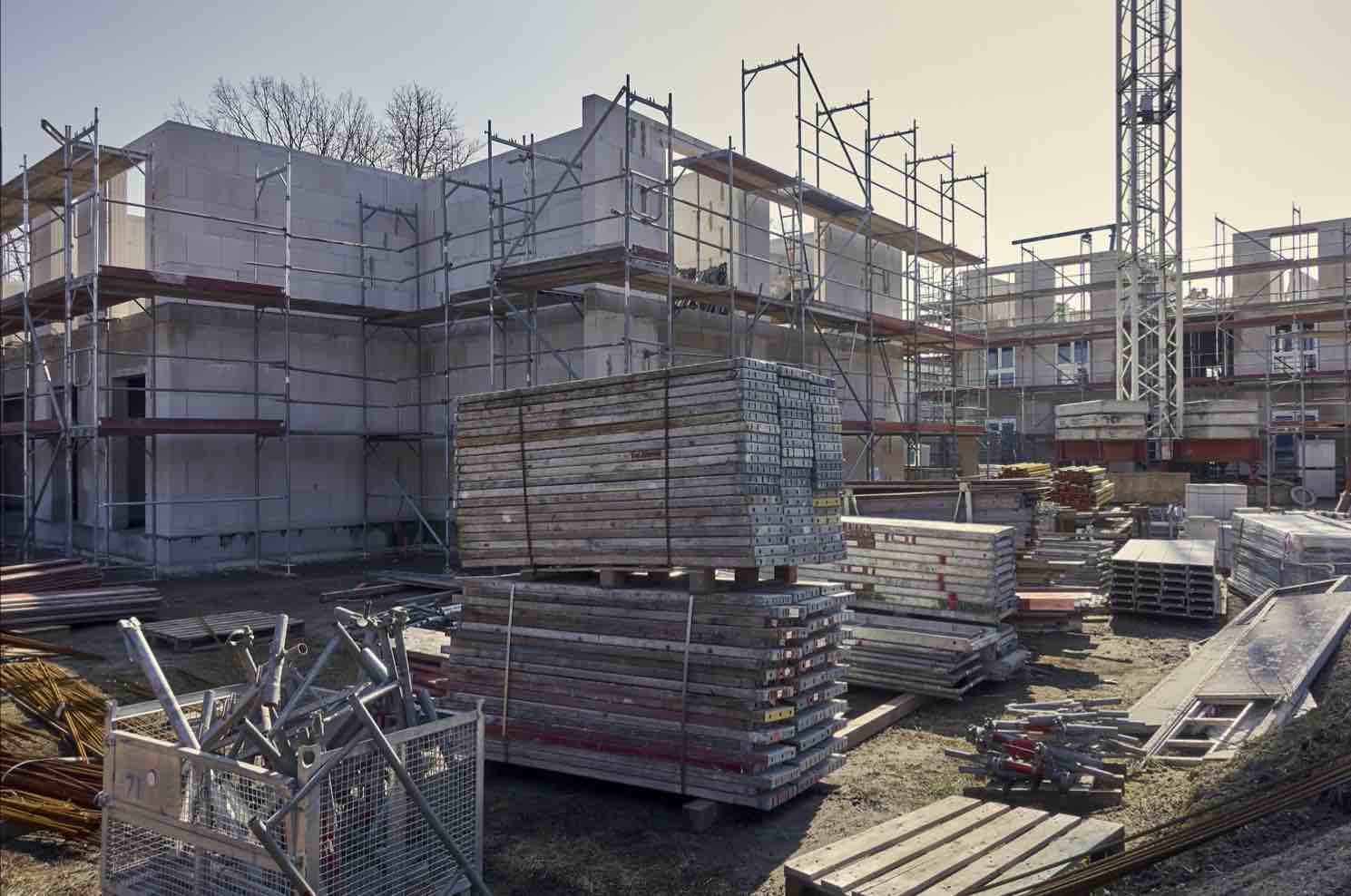
www.buildingsandcities.org/insights/commentaries/research-contributes-achieving-global.html
Research Contributes to Achieving Global Environmental Goals

Robert Crawford (The University of Melbourne) explains the importance of research for making a radical, informed shift in the way we design and construct our buildings and cities. A database on the embodied environmental aspects of construction materials shows how researchers, the construction industry and government can develop a much more environmentally responsive approach to our built environment.
Our buildings and cities place a significant burden on the natural environment. In 2018, buildings and infrastructure accounted for 36% of total global final energy use and 39% of energy-related CO2 emissions (IEA, 2019). The 2018 IPCC Special Report on Global Warming of 1.5°C called for broad transformations to the building sector, with a rapid phase out of CO2 emissions (IPCC, 2018). The World Green Building Council, in their recently released report - Bringing Embodied Carbon Upfront (Adams, Burrows and Richardson, 2019) - have also set forth the need for urgent action to reduce building and infrastructure-related emissions, with a vision for zero life cycle emissions for all new and existing built assets by 2050.
Materials influence environmental performance
Those responsible for the planning, design, construction and ongoing management of our buildings and cities, from owners and designers to facility managers, are faced with a plethora of decisions that will dictate the immediate and long-term effect of these built assets on the natural environment. One of the most crucial decisions is the selection of construction materials. Materials influence the thermal performance of a building envelope and the amount of operational heating and cooling energy needed to maintain a comfortable indoor environment for occupants. These materials can also require a considerable quantity of natural resources and result in a large amount of waste, pollution and GHG emissions in their extraction, refinement and production as well as their ongoing maintenance. Although a large amount of information, tools, and data on material performance exists, these are often inaccessible, overly complex or costly. Understanding the dynamic interactions between the environmental effects of materials and the operational performance of a building (or infrastructure) is complicated and seldom understood.
Research is crucial
Decisions involving the appropriate selection of materials involve two aspects: the actual performance of the given material within a specific context and the material's effect on the environment. Material-based design decisions, including the selection of materials with the aim of reducing the long-term environmental effects of our buildings and cities, rely on robust and comprehensive information on material performance over the service life of the built asset. Without this, what might be seen as a better solution may in reality lead to greater environmental loadings or damage.
Environmental-based decision-making relies heavily on understanding how materials affect the natural environment, during production, use and their eventual disposal. Research is crucial for providing this insight into material performance and the evidence-base needed to achieve greater confidence and certainty that choices made will reduce the long-term effects of buildings and infrastructure on the natural environment. Research organisations such as BRE (Building Research Establishment Ltd, UK), CSIRO (The Commonwealth Scientific and Industrial Research Organisation, Australia) and many others have been central to our understanding of how materials perform across a range of contexts and under a wide variety of conditions. For example, testing for fire resistance, acoustic performance or thermal conductivity provides essential information to designers, giving them greater certainty of material performance once in use. In addition, research in many universities around the world is helping to broaden and deepen our understanding of the environmental effects of materials over their life cycle.
Data on material production is needed
Those involved in the design, specification and procurement of buildings and infrastructure projects are increasingly looking for data on how materials perform across their entire life. While the consideration of material selection to minimise operational energy use in buildings is commonplace in many countries, the evidence shows that the environmental loadings associated with material production, in particular, can be even greater than those associated with the operation of a built asset. This is becoming even further pronounced as operational efficiencies improve. Reliable, robust information on the resource demands and environmental effects associated with material production is thus of increasing importance to those involved in the creation and maintenance of our buildings and cities.
This data, often referred to as embodied environmental flow data (or more specifically, embodied energy, for example), is available in tools and databases such as the recently released Environmental Performance in Construction (EPiC) Database. The EPiC Database is an open-access repository that contains embodied energy, water and GHG emissions coefficients for over 250 construction materials used in Australia (Crawford, Stephan and Prideaux, 2019). These coefficients were compiled using an approach developed as part of research conducted by the late Graham Treloar in the early 1990s. This approach, known as Path Exchange hybrid analysis, combines data collected from the companies involved in material production with whole-of-industry data (Crawford et al., 2018). This has the advantage of producing data that is more complete than other sources. It has also been used to show that the embodied resource demands and emissions of built assets are much greater than previously thought. Other countries have similar data, although compiled using different approaches, such as the ecoinvent database (Frischknecht et al., 2005) and ICE database (Jones, 2019).
Industry, government and researchers working together
Material performance data, such as that contained within the EPiC Database, requires considerable time and effort to compile. This often involves years of data collection, validation, verification, analysis and ultimately compilation into a useable format. While fundamental basic research is essential, often the most relevant outcomes result from research that has strong industry engagement. This is particularly true for built environment-related research that aims to inform or even change established industry practice. For example, the EPiC coefficients rely heavily on engagement between industry and researchers to collect and synthesise data on material production processes.
The research that led to the EPiC Database, like most built environment-related research of this scale, relied on government funding. While this project is one of many success stories of how government investment and engagement can lead to practical, relevant, highly useful and solution-oriented outcomes, funding for research in built-environment fields is limited and rarely a high priority. This is despite the fact that the construction sector is one of the top contributors to GDP in most economies, one of the largest contributors to global environmental issues, and represents one of the greatest opportunities for mitigating future environmental damage.
Meeting the need for housing and infrastructure from a rapidly growing global population while addressing the challenges of climate change and human-induced environmental degradation will require a radical shift in the way we design and construct our buildings and cities. However, without the data, tools, leadership and policy to make this happen, business as usual is likely to prevail. Guidance and in-depth knowledge, based on robust, comprehensive data is key to informing the design of our future buildings and cities to meet these critical challenges. Research that brings together industry and policy-makers with leading built-environment researchers must be an integral part of the much more environmentally responsive approach to the design and construction of our built environment.References
Adams, M., Burrows, V., & Richardson, S. (2019). Bringing embodied carbon upfront. London: World Green Building Council.
Crawford, R. H., Bontinck, P.-A., Stephan, A., Wiedmann, T., & Yu, M. (2018). Hybrid life cycle inventory methods - A review. Journal of Cleaner Production, 172, 1273-1288. doi: www.doi.org/10.1016/j.jclepro.2017.10.176
Crawford, R. H., Stephan, A., & Prideaux, F. (2019). Environmental Performance in Construction (EPiC) Database. Melbourne: The University of Melbourne. doi: www.doi.org/10.26188/5dc228ef98c5a
Frischknecht, R., Jungbluth, N., Althaus, H.-J., Doka, G., Dones, R., Heck, T., . . . Spielmann, M. (2005). The ecoinvent database: Overview and methodological framework. International Journal of Life Cycle Assessment, 10, 3-9. doi: www.doi.org/10.1065/lca2004.10.181.1
IEA. (2019). Global Status Report for Building and Construction 2019. Paris: International Energy Agency.
IPCC. (2018). Global Warming of 1.5°C. An IPCC Special Report on the impacts of global warming of 1.5°C above pre-industrial levels and related global greenhouse gas emission pathways, in the context of strengthening the global response to the threat of climate change, sustainable development, and efforts to eradicate poverty. V. Masson-Delmotte, P. Zhai, H.-O. Pörtner, D. Roberts, J. Skea, P. R. Shukla, A. Pirani, W. Moufouma-Okia, C. Péan, R. Pidcock, S. Connors, J. B. R. Matthews, Y. Chen, X. Zhou, M. I. Gomis, E. Lonnoy, T. Maycock, M. Tignor, & T. Waterfield. Geneva: Intergovernmental Panel on Climate Change.
Jones, C. (2019). Inventory of carbon and energy (ICE) database V3.0 Beta. http://www.circularecology.com/embodied-energy-and-carbon-footprint-database.html
Latest Peer-Reviewed Journal Content
Built environment governance and professionalism: the end of laissez-faire (again)
S Foxell
Co-creating justice in housing energy transitions through energy living labs
D Ricci, C Leiwakabessy, S van Wieringen, P de Koning & T Konstantinou
HVAC characterisation of existing Canadian buildings for decarbonisation retrofit identification
J Adebisi & J J McArthur
Simulation and the building performance gap [editorial]
M Donn
Developing criteria for effective building-sector commitments in nationally determined contributions
P Graham, K McFarlane & M Taheri
Reimagining circularity: actions for optimising the use of existing buildings
R Lundgren, R Kyrö, S Toivonen & L Tähtinen
Effective interdisciplinary stakeholder engagement in net zero building design
S Vakeva-Baird, F Tahmasebi, JJ Williams & D Mumovic
Metrics for building component disassembly potential: a practical framework
H Järvelä, A Lehto, T Pirilä & M Kuittinen
The unfitness of dwellings: why spatial and conceptual boundaries matter
E Nisonen, D Milián Bernal & S Pelsmakers
Environmental variables and air quality: implications for planning and public health
H Itzhak-Ben-Shalom, T Saroglou, V Multanen, A Vanunu, A Karnieli, D Katoshevski, N Davidovitch & I A Meir
Exploring diverse drivers behind hybrid heating solutions
S Kilpeläinen, S Pelsmakers, R Castaño-Rosa & M-S Miettinen
Urban rooms and the expanded ecology of urban living labs
E Akbil & C Butterworth
Living with extreme heat: perceptions and experiences
L King & C Demski
A systemic decision-making model for energy retrofits
C Schünemann, M Dshemuchadse & S Scherbaum
Modelling site-specific outdoor temperature for buildings in urban environments
K Cebrat, J Narożny, M Baborska-Narożny & M Smektała
Understanding shading through home-use experience, measurement and modelling
M Baborska-Narożny, K Bandurski, & M Grudzińska
Building performance simulation for sensemaking in architectural pedagogy
M Bohm
Beyond the building: governance challenges in social housing retrofit
H Charles
Heat stress in social housing districts: tree cover–built form interaction
C Lopez-Ordoñez, E Garcia-Nevado, H Coch & M Morganti
An observational analysis of shade-related pedestrian activity
M Levenson, D Pearlmutter & O Aleksandrowicz
Learning to sail a building: a people-first approach to retrofit
B Bordass, R Pender, K Steele & A Graham
Market transformations: gas conversion as a blueprint for net zero retrofit
A Gillich
Resistance against zero-emission neighbourhood infrastructuring: key lessons from Norway
T Berker & R Woods
Megatrends and weak signals shaping future real estate
S Toivonen
A strategic niche management framework to scale deep energy retrofits
T H King & M Jemtrud
Generative AI: reconfiguring supervision and doctoral research
P Boyd & D Harding
Exploring interactions between shading and view using visual difference prediction
S Wasilewski & M Andersen
How urban green infrastructure contributes to carbon neutrality [briefing note]
R Hautamäki, L Kulmala, M Ariluoma & L Järvi
Implementing and operating net zero buildings in South Africa
R Terblanche, C May & J Steward
Quantifying inter-dwelling air exchanges during fan pressurisation tests
D Glew, F Thomas, D Miles-Shenton & J Parker
Western Asian and Northern African residential building stocks: archetype analysis
S Akin, A Eghbali, C Nwagwu & E Hertwich



Latest Commentaries
Building-Related Research: New Context, New Challenges
Raymond J. Cole (University of British Columbia) reflects on the key challenges raised in the 34 commissioned essays for Buildings & Cities 5th anniversary. Not only are key research issues identified, but the consequences of changing contexts for conducting research and tailoring its influence on society are highlighted as key areas of action.
Lessons from Disaster Recovery: Build Better Before
Mary C. Comerio (University of California, Berkeley) explains why disaster recovery must begin well before a disaster occurs. The goal is to reduce the potential for damage beforehand by making housing delivery (e.g. capabilities and the physical, technical and institutional infrastructures) both more resilient and more capable of building back after disasters.